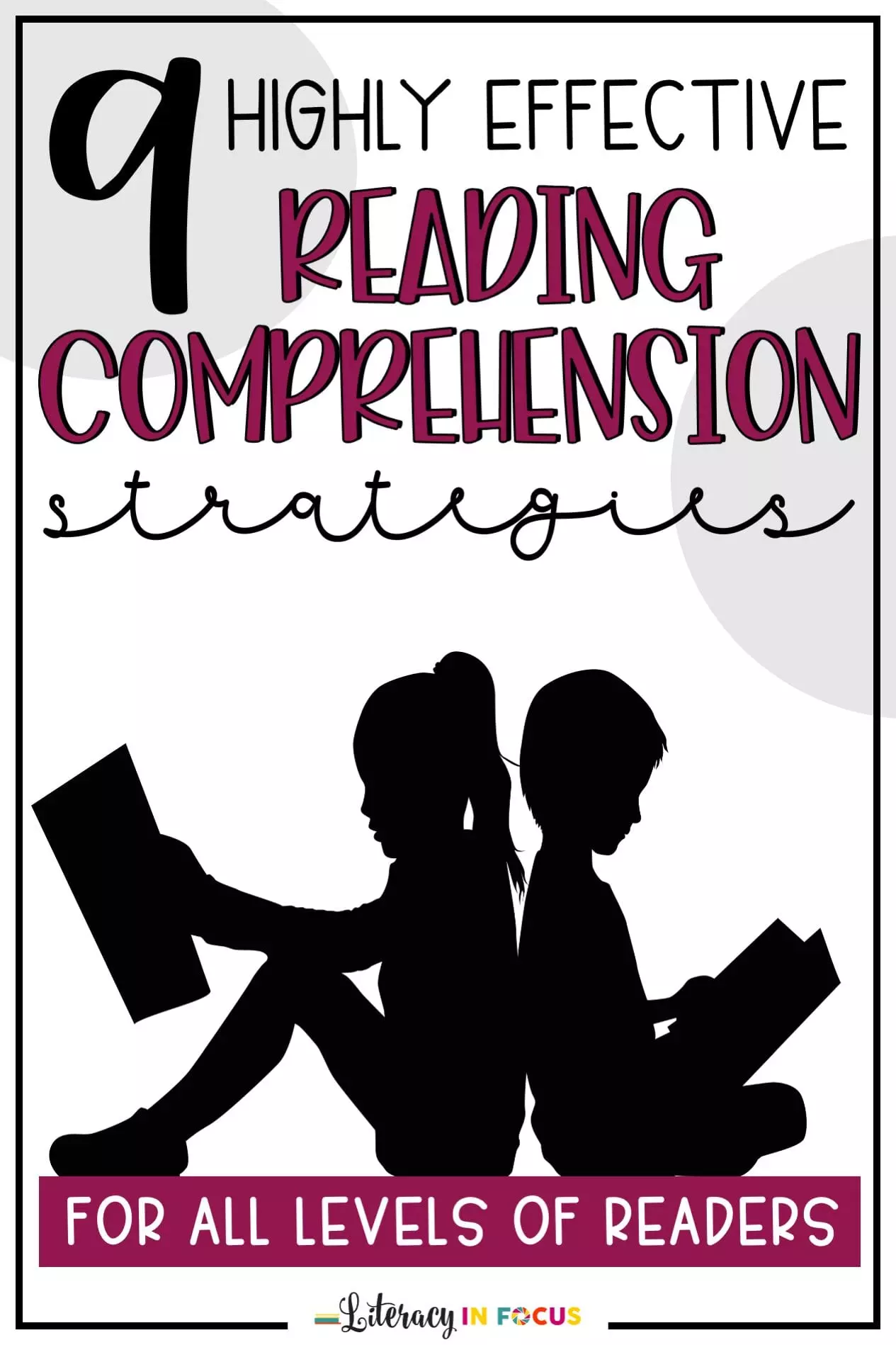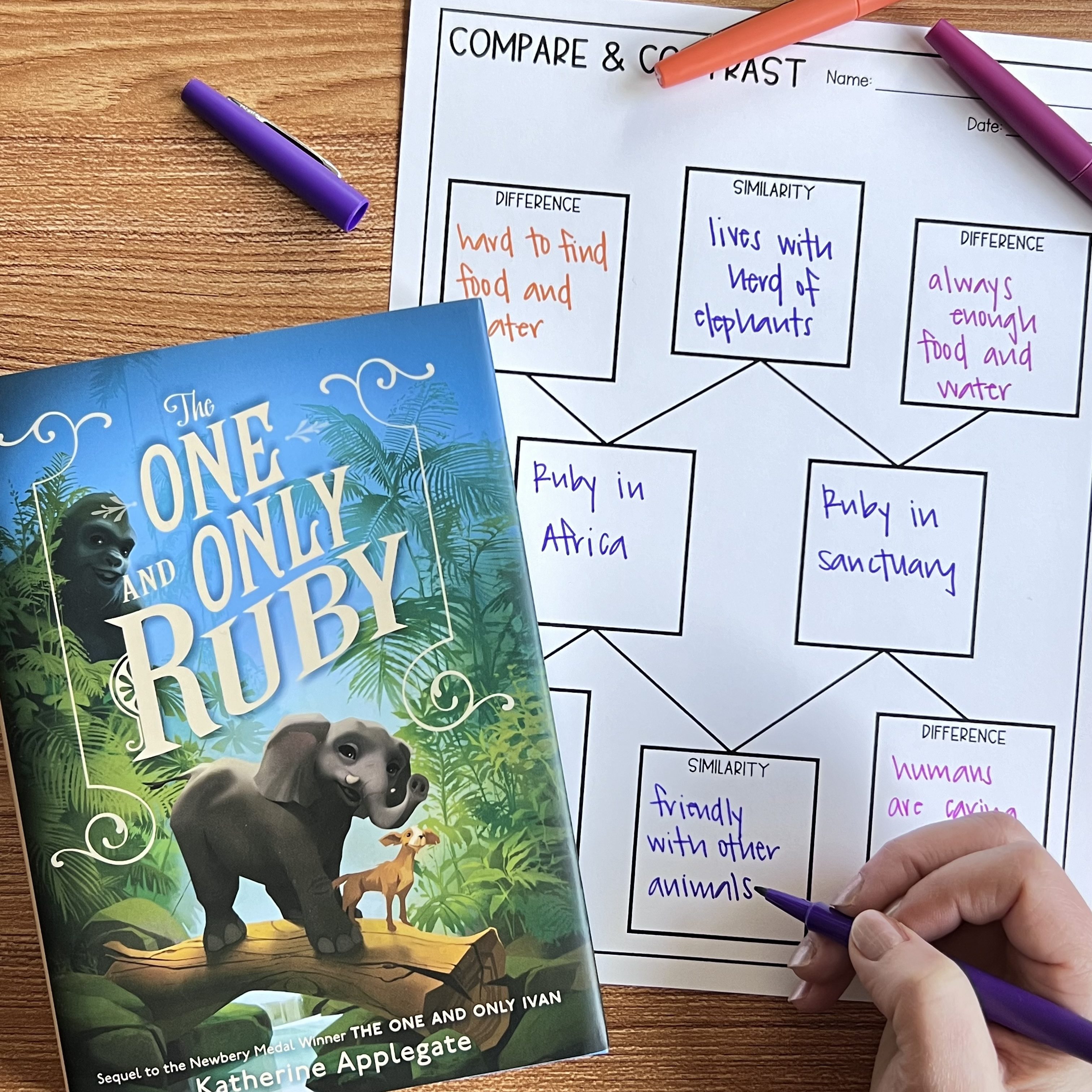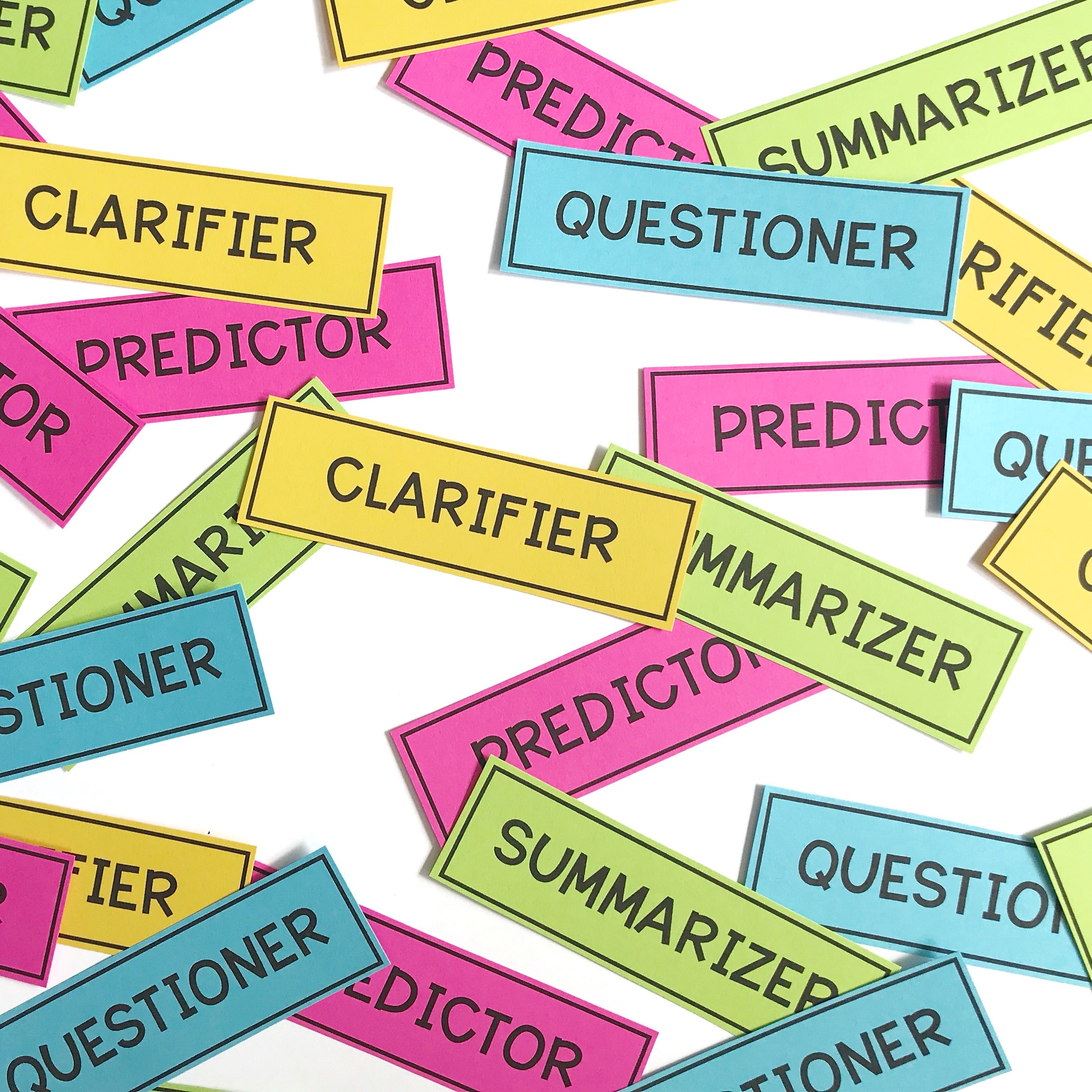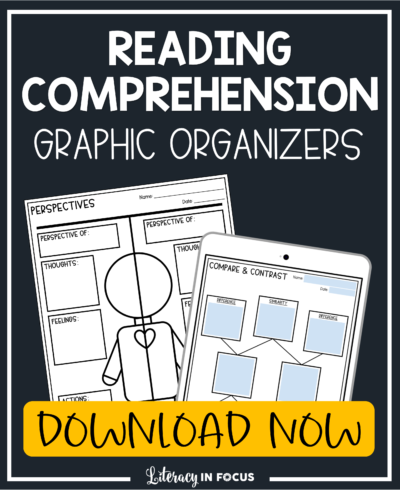9 Highly Effective Reading Comprehension Strategies
Most teachers would agree that more isn’t always better when it comes to reading comprehension strategies. Focusing on a select group of strategies gives students a chance to master each strategy and apply the learned skill set when reading independently. The nine strategies listed below are appropriate for all levels of readers and many different types of texts.
Develop Active Readers with the SQ3R Method
SQ3R is a reading comprehension strategy that encourages students to think about what they are reading while they are reading. The SQ3R method includes the following five steps:
- Survey: Before reading, students survey the text. Have them notice the title, subtitles, illustrations, and graphics. Students can also read the first paragraph, last paragraph, and text summary (if provided).
- Question: While students are surveying the text, they should formulate questions about the topic. Encourage students to write down questions as they arise. Students may also find unknown vocabulary words. This is a good time to record them and determine their meaning.
- Read: Students actively read the text. Ideally, they will find answers to the questions that arose during the survey portion of the strategy. Teach students to re-read unclear portions and determine the meaning of unknown words using context clues.
- Recite: After reading the text, students think about the information in their own words. Summarizing the text will help students conceptualize the material.
- Review: The last step in the SQ3R method requires students to review the text in a more detailed manner. Answering comprehension questions, completing a graphic organizer, or participating in a group discussion are all examples of how students can actively review the information presented in the text.
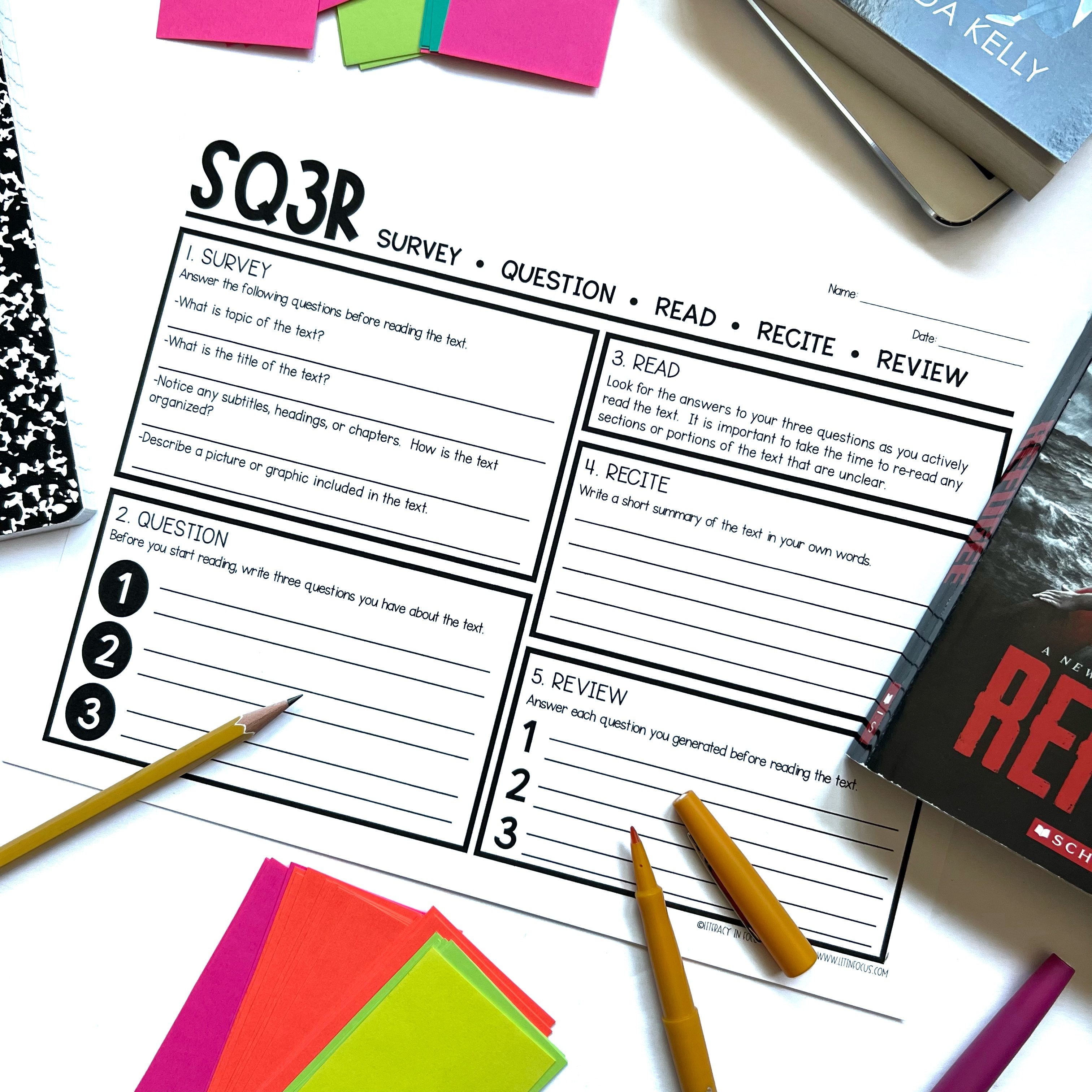
Use Chunking to Break Down Difficult Texts
Chunking is a reading strategy that breaks down challenging text into more manageable pieces. Dividing content into smaller parts helps students identify keywords, organize ideas, and synthesize information. A section of text may be broken down into paragraphs, or a paragraph may be broken down into sentences. You can use several methods to make the chunks: number paragraphs, draw lines between sections, highlight sentences, or use paper to expose the chunk you are working on and hide the rest of the text. Students determine the meaning of unknown words, identify main ideas and key details, and accurately summarize each chunk. The goal is for students to be able to chunk text independently to comprehend difficult reading passages.
Enhance Metacognition with Close Reading
Close reading is a strategy that requires critical analysis of a short but complex text. A close reading lesson will scaffold student learning and focus on text-dependent questions. When participating in a close reading, students read the text three times. The first reading is completed independently, focusing on key ideas and details. Encouraging students to use metacognitive markers in the margins of the text helps with focus when reading alone. The second reading centers on the craft and structure of the text. Students listen as you read the text aloud. Circling unknown words, highlighting main ideas, and underlining key details are examples of activities that focus on text meaning. The last reading of the text can be done in groups or with partners. It should encourage students to synthesize and apply information from the text. Answering text-based questions, connecting the text to other sources of information, or analyzing specific literary devices are all examples of text analysis for the third reading. Visit the Literacy in Focus Teachers Pay Teachers store to download free close reading bookmarks.
Guide Students Through A Text With KWL Charts
A KWL chart is a research-based reading strategy that activates students’ prior knowledge, sets a purpose for reading, and helps monitor comprehension. It works exceptionally well when starting a new text. First, establish the topic of the text and create a three-column chart that will be completed collectively as a class. The first two columns, K and W, are filled out before reading the text. The K column refers to everything students already know about the topic. The W refers to what students want to know about the topic. Taking the time to address prior knowledge and generate questions ahead of time encourages and supports active reading. The last column is L. It refers to what students learned from reading the text. Completing the L column after reading the text will allow students to make connections and reflect on what they have learned.
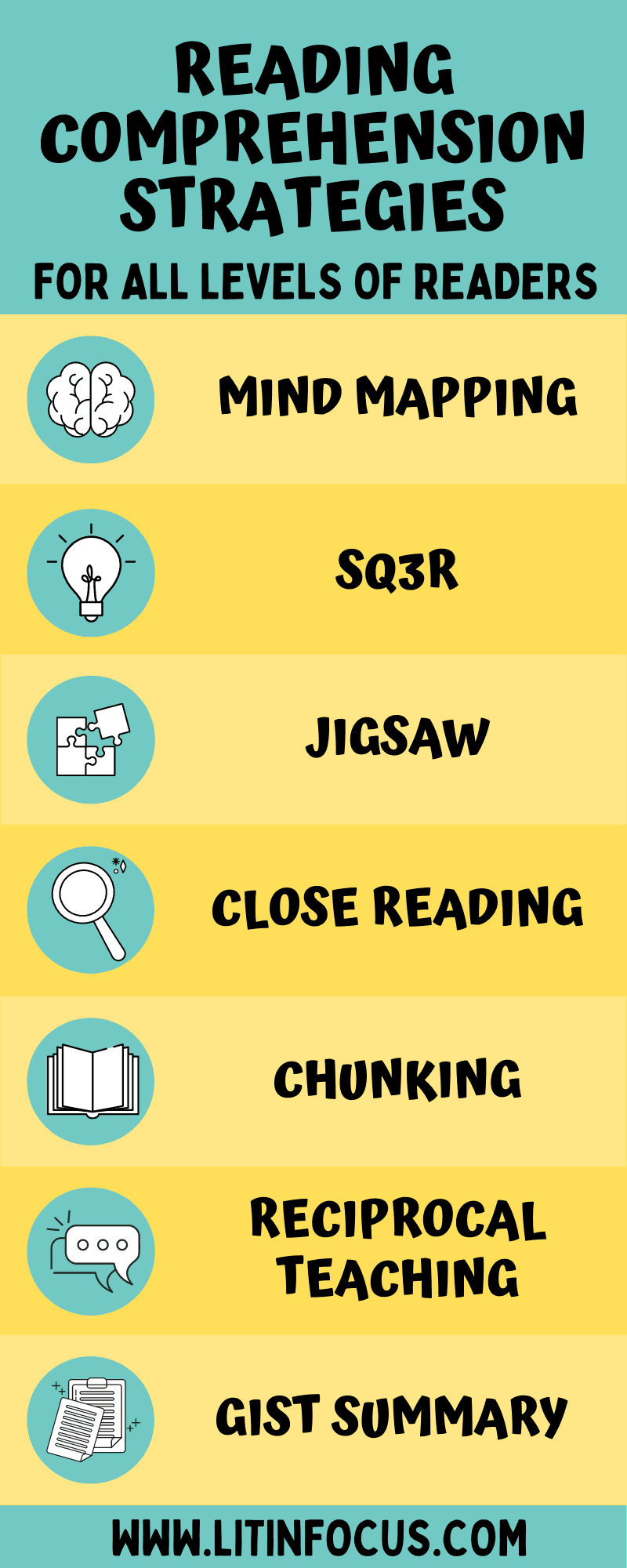
Encourage Cooperative Learning with Jigsaw
The jigsaw is a collaborative strategy that allows students to help each other build comprehension. Aside from developing a deeper understanding of the text, the jigsaw strategy provides students with an opportunity to work cooperatively and strengthen their communication skills. To implement the jigsaw strategy in your classroom, you must first select a text or topic that can be divided into four or five selections. Next, you will split your students into four or five home groups. Each group member will be responsible for reading one of the text selections and teaching the materials to the other home group members. After establishing the home groups, students break into expert groups to read and analyze the assigned text selection. To effectively master the material, have students to record their findings in some way. Completing a graphic organizer, summarizing the text, and/or answering text-based questions will all work well. When the expert groups have completed text analysis, it is time for students to return to their home groups to present the information from their text selection. Depending on the levels of ability in your classroom, a graphic organizer may also be helpful during this portion of the strategy. After all group members have relayed their information to the home group, you can evaluate understanding with an assessment. The jigsaw strategy works particularly well as an anticipatory activity. It is an excellent way for students to think critically about a topic before direct instruction begins.
Improve Comprehension with Mind Mapping
According to research, creating visual representations of concepts and ideas can help students organize and remember what they learn. Mind mapping requires students to complete a diagram or graphic organizer to visualize the reading and connect ideas. Mind maps can be as highly structured as an in-depth graphic organizer or as loosely based as doodle notes. The learning objective will help to determine the appropriate mind map for each lesson.
Stimulate Structured Discussion with Reciprocal Teaching
Reciprocal teaching encourages students to think critically about a text using four reading comprehension strategies. Implementing reciprocal teaching in your classroom will provide students with valuable skills for independent reading. Selecting and reading the text together as a class before starting the reciprocal teaching process is important. After reading the text, students are ready to break into groups of four. Providing groups with a graphic organizer to record their work will establish structure and keep students on-task. When students are in their groups, assign each student a role: questioner, clarifier, summarizer, and predictor. The first part of the strategy requires students to work independently.
- The questioner formulates two questions about the text.
- The clarifier finds two unknown words or ideas in the text.
- The summarizer sketches a picture to represent the main idea of the text.
- The predictor is responsible for predicting what might happen if the text were to continue.
The second part of the strategy begins the collaborative process. Each group member delivers their information, and the others record it on their paper. Groups will start with the questioner box. The questioner will read the two questions they came up with during part one of the strategy. The rest of the group records the questions. Next, the group will work together to answer the questions. After completing the “questioner” box, the groups move on to the clarifier portion. The clarifier states the two unknown words or ideas they came up with to complete part one of the strategy. The rest of the group records those words or ideas on their paper. The group then works together to define or explain the unknown words/ideas. Groups having a hard time defining words using context can use a dictionary. Third, the summarizer shows the group the picture they drew to represent the main idea. The rest of the group draws a similar picture on their paper. Working together, the group composes a two- to three-sentence summary of the text. Last, the predictor reveals their prediction if the text were to continue. The group members record the prediction on their papers. Then, the group works together to find clues or evidence in the text that support the prediction. Groups are finished when all four reading comprehension strategies have been discussed and completed. Click here to download the free Reciprocal Teaching Guided Worksheet for students.
Cultivate Meaningful Conversations with Think-Pair-Share
The Think-Pair-Share strategy that gives students time and structure to formulate and share ideas. It promotes participation by encouraging thoughtful responses. If done correctly, this strategy can effectively build higher-order critical thinking skills. Before implementing Think-Pair-Share with your students, describe the strategy and provide guidelines for discussion. Explain to students that they will think critically about a text-based question, discuss it with a partner, and share ideas with the rest of the class. Formulating questions from the text that foster higher-order thinking is important for the strategy to be successful. After posing the question(s), monitor and support students as they work through each step of the process.
Develop Concise Summary Writing with GIST
GIST (Generating Interactions between Schemata and Text) is a strategy for establishing comprehension of a text. It encourages students to write concise, meaningful summaries, and it works well with all levels of readers. Teaching students summarizing techniques will help them learn to synthesize information effectively . The goal of a GIST summary is for students to convey the “GIST” of what they read without the extraneous details. Using GIST, students develop the necessary skills to identify the text’s main ideas and key details. Begin the GIST strategy by having students read a short piece of text. After reading, instruct students to answer who, what, when, where, why, and how questions based on the text selection. Next, have students condense their answers into a one-sentence summary. It is important to support students in writing GIST summaries until they can do them independently.
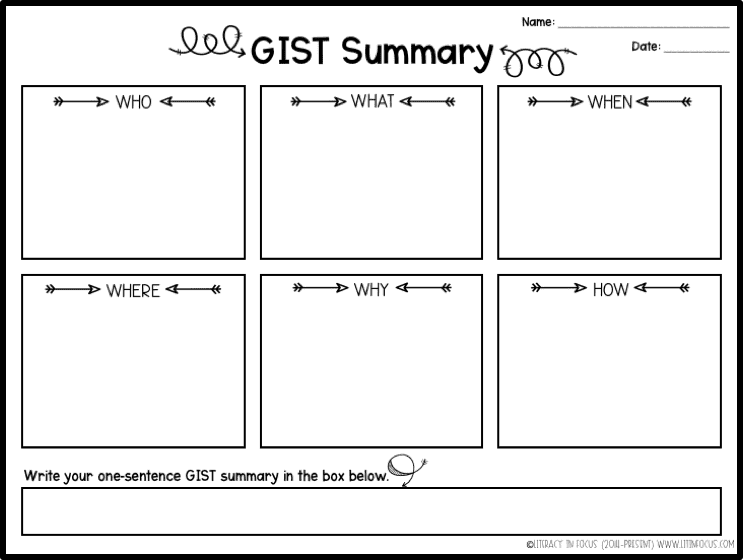
The goal in implementing reading comprehension strategies is for students to transfer those skills and apply them when reading independently. Focusing on a small group of strategies throughout the school year will give students a chance to really hone their skills.
GIST Summary Graphic Organizer

